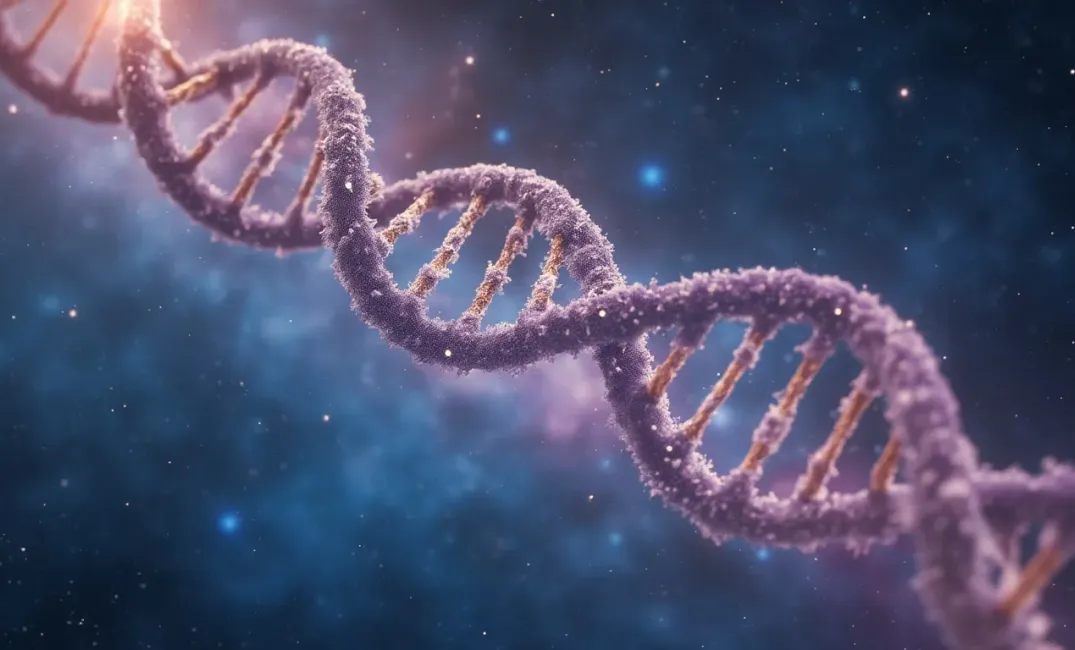Introduction: The Sculptor Within
The genetic code, a language of life penned millions of years ago, is the script upon which the drama of evolution is played. Composed of sequences and strands visible only to the molecular eye, this code dictates the form and function of every living organism, shaping diversity and defining existence. Our understanding of the genetic legacy—a treasure trove of biological history and potential—offers profound insight into who we are, where we come from, and what our future may hold.
"In the inconspicuous threads of DNA lies the tapestry of life itself—an ancient script whose sentences detail the wonders of existence and the whispers of destiny." — Author Unknown
The Beginnings: Understanding the Genetic Paradigm
The Discovery of DNA
- Early Milestones: The journey into understanding heredity began with Gregor Mendel's 19th-century experiments on pea plants, revealing the existence of hereditary units, later known as genes. This marked the dawn of genetics as a scientific field.
- The Double Helix: The groundbreaking discovery of DNA's double-helix structure in 1953 by James Watson and Francis Crick, with contributions from Rosalind Franklin and Maurice Wilkins, revolutionized biology. It unveiled the mechanism of genetic information storage and its role in guiding biological processes.
Decoding the Genetic Language
- The Genetic Code: The genetic code, consisting of sequences of four nucleotides (A, T, C, G), encodes instructions for building organisms. Like letters forming words, sequences within genes direct protein synthesis, influencing organismal traits.
- Mendelian to Molecular Genetics: The shift from classical Mendelian genetics to molecular genetics enabled researchers to probe deeper into the functional mechanisms of genes. Advances such as recombinant DNA technology and genetic engineering opened new frontiers in biotechnology.
The Genetic Mosaic: Diversity and Evolution
The Genetic Basis of Diversity
- Sources of Variation: Genetic diversity arises from mutations, recombination, and horizontal gene transfer. These processes introduce variation, driving evolution and adaptation through natural selection and genetic drift.
- Population Genetics: The study of genetic variation within populations illuminates evolutionary dynamics and ecological interactions. Population genetics combines genetic statistics and evolutionary biology to understand allele frequency changes and species survival.
Evolutionary Insights
- Phylogenetics and Common Ancestry: Phylogenetics employs genetic data to reconstruct evolutionary relationships, revealing shared ancestry among species. This genetic evidence confirms Darwin's theory of natural selection and illustrates life's evolutionary tree.
- Adaptive Radiation and Convergence: Genetics unravels evolutionary phenomena like adaptive radiation, where species evolve from a common ancestor to fill diverse ecological niches. Similarly, convergent evolution shows how unrelated species develop similar traits due to analogous environmental pressures.
Genetic Healthcare: Advancements and Challenges
Genetic Medicine and Technologies
- The Human Genome Project: Completed in 2003, this ambitious initiative mapped the entire genetic blueprint of the human body. It paved the way for personalized medicine, enabling tailored treatments based on individual genetic profiles.
- CRISPR and Gene Editing: The CRISPR-Cas9 system revolutionizes genetic engineering by allowing precise DNA modification. Its implications for disease treatment, agriculture, and synthetic biology are vast, but ethical dilemmas and unintended consequences require careful consideration.
Genetic Counseling and Ethical Concerns
- Genetic Testing and Counseling: Advances in genetic testing provide insights into inherited conditions and disease predispositions. Genetic counseling supports individuals in understanding and managing genetic health risks, guiding informed decision-making.
- Ethical Considerations: The power to alter genes raises profound ethical questions about human enhancement, genetic privacy, and designer babies. Balancing innovation with ethical imperatives is crucial to honor diversity and human dignity.
The Societal Impact of Genetics
Genetics and Human Identity
- Genomics and Ancestry: Ancestral genomics explores human origins and migration patterns, connecting individuals to their genetic heritage. DNA testing services democratize access to ancestry information, reshaping identity narratives.
- Epigenetics: Beyond the Genome: Epigenetic research reveals that environmental factors can influence gene expression without altering the DNA sequence. This reversible "switch" in gene activity underscores the significance of lifestyle and environment on health and development.
Agriculture and Environmental Genetics
- Crop Biotechnology: Genetic engineering has revolutionized agriculture by developing genetically modified crops with traits like pest resistance and enhanced nutrition. The balance between innovation and ecological risk remains a global debate within agricultural ethics.
- Conservation Genomics: Genetic tools aid conservation efforts by assessing species diversity, identifying endangered populations, and crafting effective strategies for ecosystem restoration and biodiversity preservation.
Future Directions: The Genetic Frontier
Prospects in Genomic Research
- Personalized Medicine: Genomics enhances healthcare personalization, enabling treatments tailored to genomic profiles. Ongoing research in pharmacogenomics aims to optimize drug efficacy and minimize adverse reactions, revolutionizing patient care.
- Synthetic Biology: Synthetic biology combines engineering and genetics to redesign organisms for various applications, from biofuels to biosensors. The creation of novel life forms poses profound questions about the boundaries between natural and artificial life.
Genetics and Society: Responsibility and Innovation
- Regulation and Governance: Policymakers must navigate the challenges of regulating genetic technologies while fostering innovation. International cooperation and public engagement are vital to developing frameworks that protect societal interests.
- Educating Future Generations: Equipping future generations with genetic literacy ensures informed citizenship. Integrating ethics, biology, and technology education emphasizes the responsibility that accompanies genetic knowledge and innovation.
Conclusion: Genetics, the Blueprint of Tomorrow
The exploration and manipulation of the genetic code represent one of humanity's greatest achievements, shedding light on our origins, health, and potential. This understanding endows us with profound power and responsibility—to shape societies, care for the planet, and delve into the unknown.
As we advance through the cosmic expanse, let genetics guide our journey—an eternal blueprint whispering secrets of the universe, threading the tapestry of life itself. May future beings, traversing distant frontiers, draw wisdom from these reflections, discovering the intricate interplay of nature, nurture, and destiny in their endless quest for knowledge and enlightenment.
"In the constellation of human endeavor, genetics traces the celestial paths that define existence—a dance of molecules, carrying the stories of stars past, and unveiling the mysteries of worlds yet to come." — *Author Unknown*
DNA, GENETICS, EVOLUTION, CONSERVATION, ETHICS, DIVERSITY, BIOTECHNOLOGY, INNOVATION, ANCESTRY, HEALTHCARE

